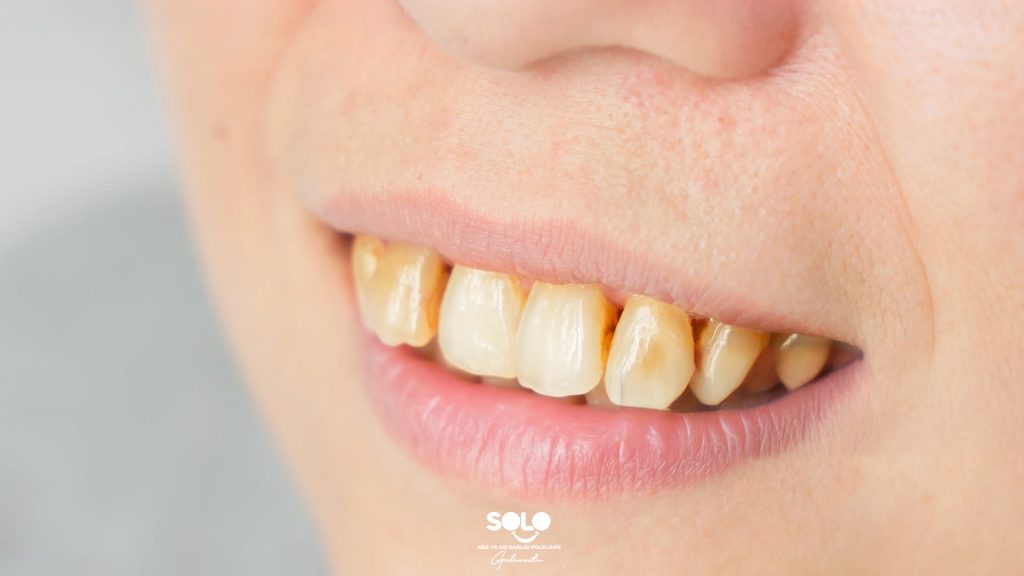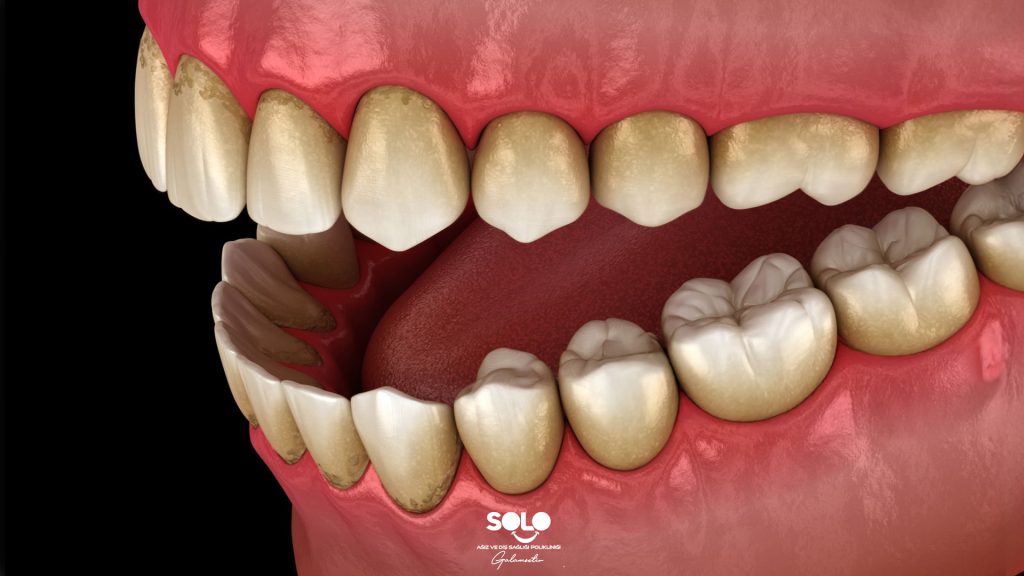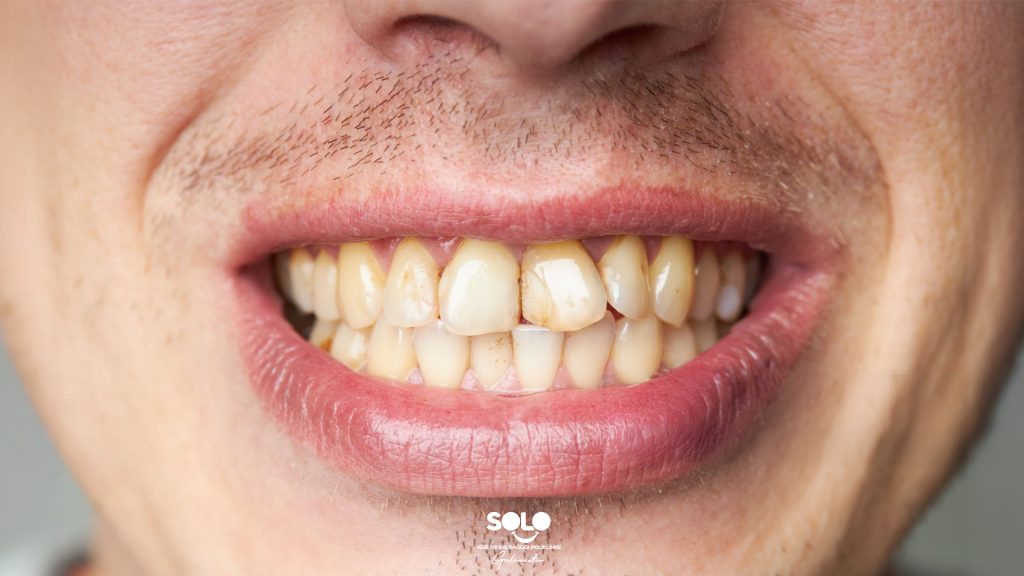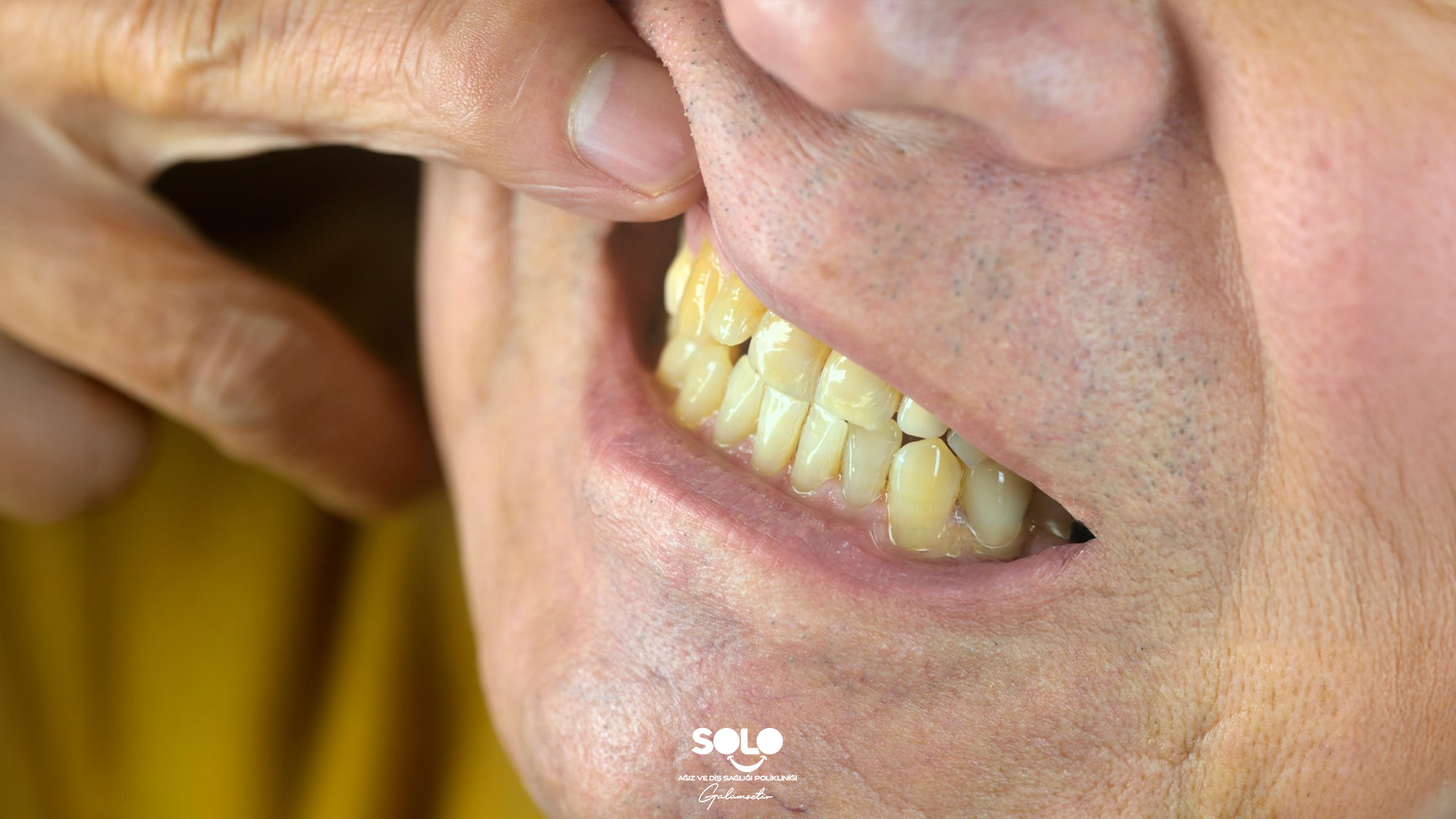What Causes Yellowing of Teeth?
Smiling is one of the most natural forms of expression, bringing happiness to both oneself and others. Healthy, white, and shiny teeth make this smile more attractive. However, over time, many people notice that their teeth lose their former whiteness and begin to yellow. This is not only aesthetically unsightly but can also negatively impact a person’s self-confidence. Many factors, from the foods and drinks we consume in our daily lives to our personal habits and even genetics, can cause changes in tooth color. So, what causes yellowing in teeth?
Is Tooth Yellowing a Natural Process?
First of all, it’s important to understand that teeth appearing completely white isn’t actually a natural occurrence. Each person’s tooth color can vary depending on genetics, just like eye or hair color. Some people are naturally whiter, while others may have a more yellowish or creamy hue. Therefore, yellowing of teeth is often not a sign of poor health, but rather a completely natural characteristic.
So, yellowing of teeth doesn’t always indicate poor oral hygiene. However, external factors such as daily food and beverage consumption, habits like smoking, or inadequate oral hygiene can exacerbate this natural shade difference and accelerate yellowing.

External Factors That Increase Tooth Yellowing
Dieting Habits
One of the most common causes of tooth yellowing is the food and beverages we consume. Dark and acidic beverages, in particular, can stain tooth enamel.
- Tea and Coffee: Due to the tannins they contain, they adhere easily to the tooth surface and cause yellowing over time.
- Red Wine: Due to its acidic nature and dark color, it can stain teeth.
- Sodas: Both their acidic nature and the pigments they contain damage tooth enamel.
- Spicy Foods and Sauces: Heavily pigmented foods, such as curry, can cause tooth discoloration.
Dieting habits play a significant role in the loss of whiteness of teeth over time.
Smoking and Tobacco Use
Smoking or chewing tobacco is one of the most prominent causes of yellowing teeth. The nicotine and tar they contain darken the color of teeth in a short time. Long-term use can not only cause yellowing but also lead to permanent brownish stains. Tobacco use also negatively impacts gum health.
Inadequate Oral and Dental Care
Failure to brush teeth regularly, floss, and maintain good oral hygiene also accelerate yellowing. Food residue left in the mouth turns into bacterial plaque, which over time changes the color of teeth. Without regular care, not only yellowing can occur, but also tartar and cavities.

Medication Use
Long-term use of some medications can cause changes in tooth color. Tetracycline, an antibiotic used in childhood, can leave gray-yellow stains on teeth. Some antihistamines, blood pressure medications, and antidepressants can also darken teeth.
Aging
The natural whiteness of teeth diminishes with age. This is due to the thinning of tooth enamel. As enamel thins, the underlying dentin becomes more visible. Dentin naturally has a yellowish hue, so yellowing of teeth becomes inevitable with age.
Genetic Factors
Some people’s teeth may be naturally darker. This is entirely genetic. The thickness and color of tooth enamel are also affected by genetics. Teeth with thick enamel may appear whiter, while those with thin enamel may appear more yellowish.
Excess Fluoride
Fluoride is an essential mineral for dental health. However, excessive fluoride intake (especially in childhood) can cause white or yellowish stains on teeth. This condition is called fluorosis.
Trauma and Damage
Impacts on teeth can cause changes in tooth color. Impacts to teeth, especially during childhood, can affect tooth development and lead to permanent discoloration.

How to Prevent Yellowing of Teeth?
While yellowing of teeth can’t always be prevented completely, it can be reduced with some simple habits:
- Brushing and flossing your teeth regularly
- Rinsing your mouth with water after consuming beverages like tea, coffee, and wine
- Avoiding cigarettes and tobacco products
- Going to your dentist for regular checkups
- Limiting sugary and acidic foods
These small but effective steps can help prevent yellowing of teeth.
How to Get Sparkling White Teeth
Many people dream of having sparkling white teeth that shine brightly in the mirror. However, due to the natural structure of teeth, achieving a completely snow-white appearance isn’t always possible. However, with proper care and some professional methods, you can make your teeth look whiter and healthier.
First and foremost, regular brushing and flossing help remove plaque and stains from the surface of your teeth. Proper brushing at least twice a day will make your teeth appear brighter over time. Furthermore, avoiding habits that cause yellowing of teeth, such as coffee, tea, red wine, and smoking, can also make a big difference.
For those seeking a more advanced level of whiteness, professional whitening methods performed by dentists are an effective solution. These procedures, performed in a clinical setting, provide visible whitening in a short time. Whitening toothpastes or custom trays that can be applied at home are also supportive methods.

